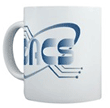July 2007 General Meeting by Chris Novell, along with Bruce Preston Hiss! Pop! Crackle! Snap! may be fine—for a cereal—but those are not desirable sounds when it comes to listening to your favorite music. That’s why it is terrific that Bruce Preston, long time member and officer of DACS, stepped forward, volunteering to give a presentation on how to eliminate these objectionable aliens so that you could instead look forward to a pleasurable listening experience. A major benefit of converting analog music to digital is that these hazards to harmony can be removed. You don’t need expensive hardware or software. If you already have a music source (turntable, tape player, etc.) and a computer, all you need is the appropriate and inexpensive cable available from RadioShack. The process consists of selecting the right target device format (CDA WAV, or MP3, which are all close equivalents, depending upon how you will listen to your music), adjusting the recording level, and playing the sound source into the computer, recording as you go—the last a process also known as “ripping.” The next three steps include—
The last activities consist of assembling the target CD from cuts and placing them in the selection window of your CD burner software, burning the CD, and test playing the CD. During his presentation Bruce established that it is perfectly fine to make a copy of copyrighted material as long as the copy is for your own use. However, Fair Use does not permit you to make copies for distribution to others. Bruce outlined some of the basics for the audience: “74 minutes of sound can go on a standard CD. Compressing via MP3, (it varies with the complexity of the music) usually does an average of 10:1 compression, so you could get something on the order of 740 minutes of stereo on a CD, but you can play it only with an MP3 compatible player or computer.” There are several digital audio editors available: Bruce demonstrated two programs, Audio Surgeon from Voyetra available via download for under $30, and the free Audacity published via the open software movement. He used these to clean up surface noise from a recording of a 1938 jazz concert. The burning software he used was RecordNow Max, although he pointed out that any CD burning software will handle it. While adding text to a data CD is something that can be done at intervals over time until it is full, it is not the same way for music stored as CDA (Compact Disk Audio, the audio format understood by CD players). “Putting music on a CD is a one time event,” Bruce explained. After that, the CD closes up like a clam. Bruce offered some other tips that an unseasoned person might not remember to consider. For example, mute any other sound making device during your conversion session. “You’ve got mail” would be questionable lyrics for most any song. Assisting in the demonstration of this fine-tuned sound management program was Bruce’s son, Scott. |
Mugs and more, visit CafePress to order
